Ministry of Statistics & Programme Implementation
Release of SDG publications on the occasion of 19th Statistics Day (29th June 2025)
Posted On:
29 JUN 2025 2:39PM by PIB Delhi
On the occasion of 19th Statistics Day, on 29th June 2025, the Ministry of Statistics and Programme Implementation released the following publications on Sustainable Development Goals (SDGs):
- Sustainable Development Goals – National Indicator Framework Progress Report, 2025
- Data Snapshot on Sustainable Development Goals – National Indicator Framework, Progress Report, 2025
- Sustainable Development Goals – National Indicator Framework, 2025
2. Endorsing India’s commitment to implement the Sustainable Development Goals (SDGs) while responding to national priorities, the Ministry of Statistics and Programme Implementation has developed the National Indicator Framework (NIF) for SDGs, in consultation with concerned Ministries/ Departments, UN Agencies and other stakeholders, to facilitate monitoring of the SDGs at national level. Based on the updated SDGs-NIF, every year on Statistics Day (i.e., on 29th June) MoSPI releases the Progress Report on SDGs with time series data along with two more SDG publications which are derived from the progress report.
3. In this series, the MoSPI released the following publications on 29th June, 2025 on the occasion of Statistics Day, 2025:
(i) Sustainable Development Goals – National Indicator Framework Progress Report, 2025
The report presents the time series data on the SDG national indicators, received from the data source Ministries, which will be instrumental in monitoring the national-level progress of the 17 SDGs. SDG Progress Reports, released by MoSPI, serve as valuable tools for policymakers, planners, and other stakeholders. The report consists of four main sections:
(a) Overview and Executive Summary- The ‘Overview’ covers the background of SDG-NIF along with the role and steps taken by MoSPI for facilitating the monitoring of SDGs at the national level. ‘Executive Summary’ includes goal-wise summary highlights/ progress made during the period under reference.
(b) Data Snapshot presenting the data summary of the SDG national indicators.
(c) Metadata contains information on each indicator describing goal, target, level & type of disaggregation, mapping with global indicator, unit of measurement, link/source(s) of data availability etc.
(d) Data Tables presenting time series data on the indicators, wherever available. The data can be downloaded in MS Excel format.
- Data Snapshot on Sustainable Development Goals – National Indicator Framework, Progress Report, 2025 is a derived report, in handbook form, from the Sustainable Development Goals – National Indicator Framework Progress Report, 2025, providing national level time series data for the SDG indicators.
- Sustainable Development Goals – National Indicator Framework, 2025 is also a derived report, in handbook form, from the Sustainable Development Goals – National Indicator Framework Progress Report, 2025, encompassing all the national SDG indicators along with its data source and periodicity. The report consists of 284 national SDG indicators.
4. These reports on SDGs are readily accessible to the public and can be obtained from the MoSPI website (www.mospi.gov.in).
Highlights of the Sustainable Development Goals – National Indicator Framework Progress Report, 2025
The SDGs NIF serves as the backbone for monitoring SDGs at the national level, offering valuable guidance to policymakers and the implementing agencies of various schemes and programs. The major data sources for these SDG national indicators are administrative data, surveys and censuses. Primarily secondary data from concerned line Ministries is used for the compilation of the indicators.
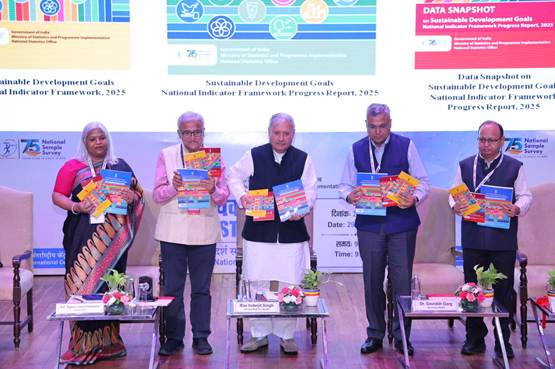
Some of the highlights from the SDG NIF progress report 2025 are:
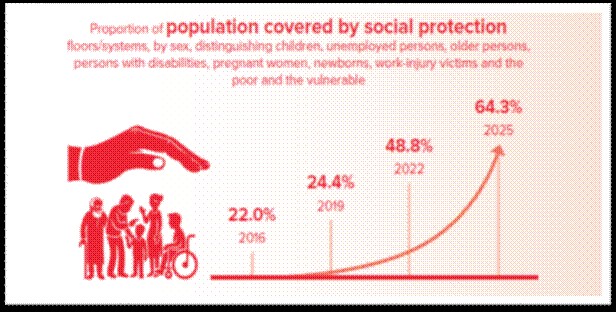
The population covered by social protection systems/floors has increased from 22% in 2016 to 64.3% in 2025, indicating substantial expansion in social security coverage in the country.
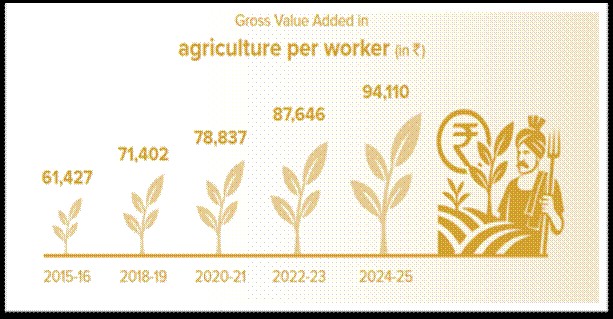
The Gross Value Added in agriculture per worker (in Rs.) has increased from 61,247 in 2015-16 to 94,110 in 2024-25, indicating improved agricultural productivity and income per worker in the country.
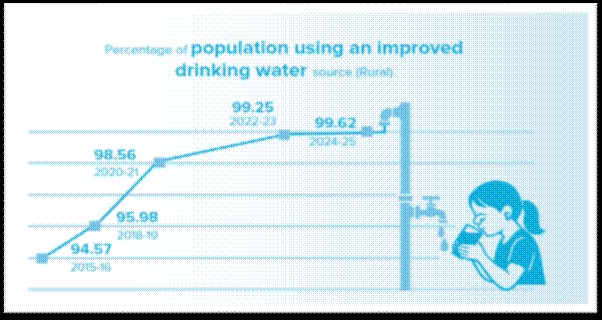
Percentage of population using an improved drinking water source in rural areas has increased from 94.57% in 2015-16 to 99.62% in 2024-25, indicating significant progress toward universal safe water access in rural India.
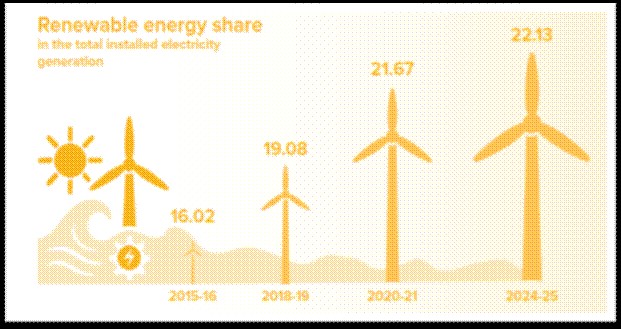
The renewable energy share in the total installed electricity generation has increased from 16.02 in 2015-16 to 22.13 in 2024-25, indicating consistent progress toward cleaner and sustainable energy generation in the country.
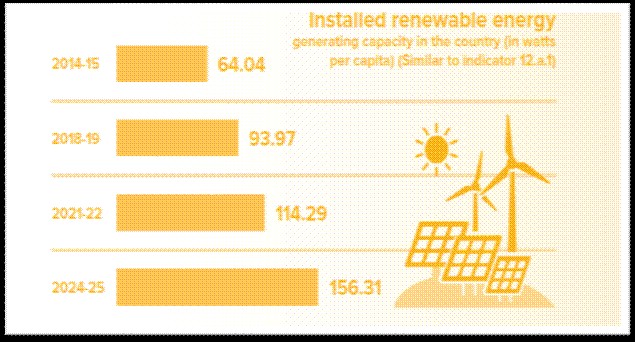
The installed renewable energy generating capacity in the country has increased from 64.04 watts per capita in 2014-15 to 156.31 watts per capita 2024-25, indicating a strong push toward sustainable energy development.
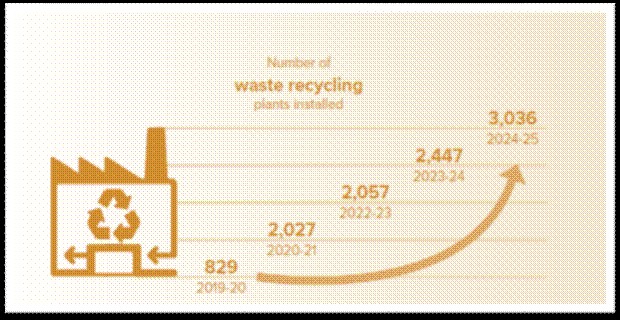
Number of waste recycling plant installed have increased from 829 in 2019-20 to 3036 in 2024- 25, indicating a significant strengthening of waste management infrastructure.
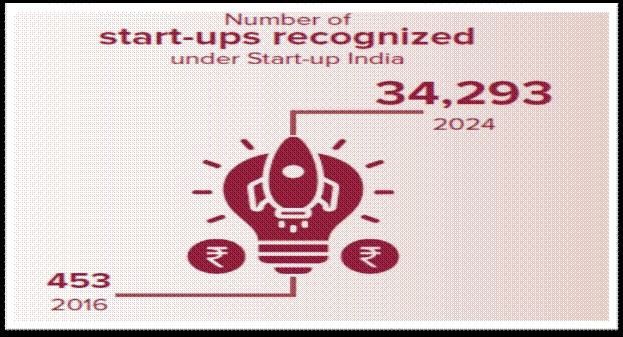
The number of start-ups recognised under start-up India have increased from 453 in 2016 to 34,293 in 2024, showing strong growth in entrepreneurship across the country.
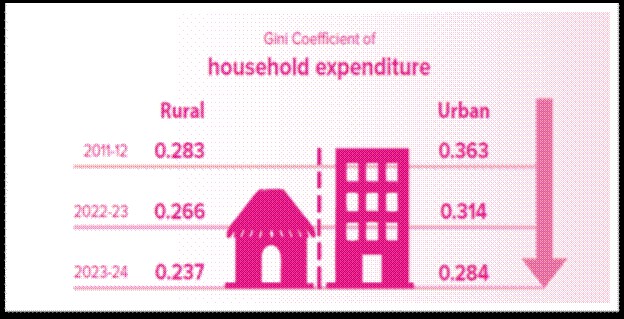
The Gini coefficient of household expenditure has decreased from 0.283 in 2011-12 to 0.237 in 2023-24 in rural areas. Also, for urban areas it has decreased from 0.363 in 2011-12 to 0.284 in 2023-24, showing a clear move toward more equal spending and reduced income inequality across both regions.
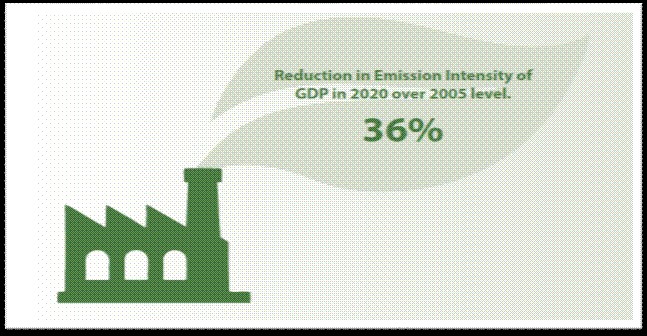
The reduction in emissions intensity of GDP in 2020 over 2005 level is 36%, indicating significant progress toward a low-carbon economy.
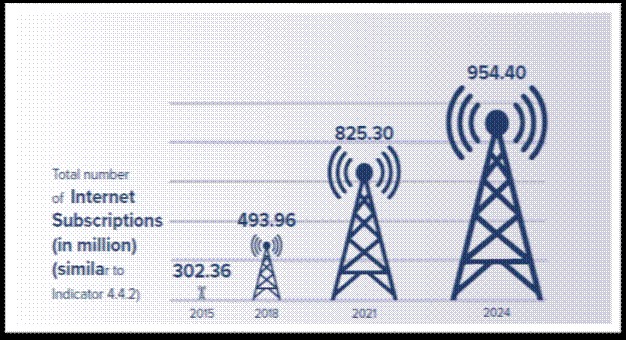
The total number of internet subscriptions (in millions) has increased from 302.36 in 2015 to 954.40 in 2024, showing a sharp rise in digital connectivity across the country.
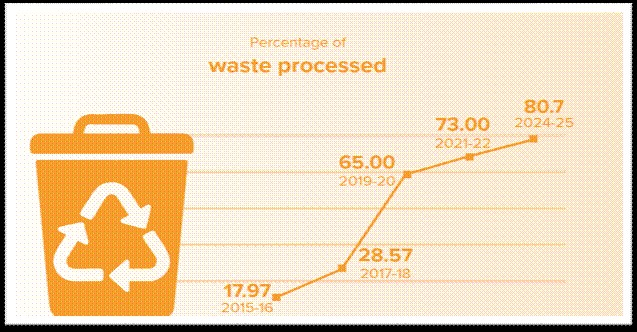
The percentage of waste processed has increased from 17.97% in 2015-16 to 80.7% in 2024-25, indicating significant progress in waste management efficiency in the country.
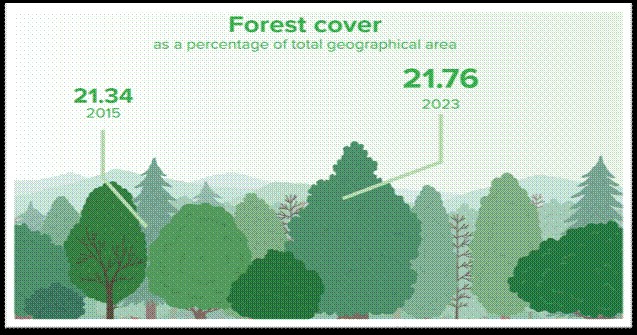
The forest cover a percentage of total geographical area has increased from 21.34% in 2015 to 21.76% in 2023, showing a steady rise in the country’s forest areas.
***
Samrat/Allen
(Release ID: 2140573)